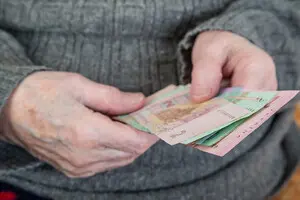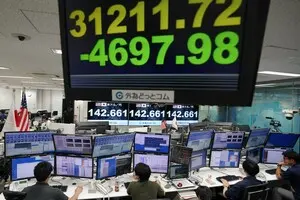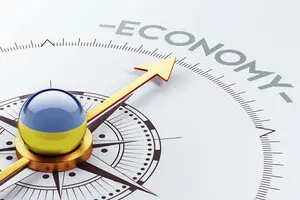What Prevents the Sale of Confiscated (Pro)Russian Assets?
In May 2022, in response to the aggression of the Russian Federation, the parliament introduced a new type of sanctions, namely the confiscation of assets into state income.
For more than two years, 58 individuals and companies have come under the influence of the sanctions mechanism, in which more than 1,700 assets have been confiscated: from real estate and corporate rights to works of art and weapons. The sale of these assets should provide funds to rebuild the destroyed infrastructure and provide compensation to war victims.
As of mid-August, Ukraine confiscated from the Russians and their accomplices:
- works of art — 537 (31%);
- weapons — 336 (19%);
- transport — 292 (17%);
- aircraft parts — 192 (11%);
- real estate — 181 (10%);
- corporate rights — 69 (5%);
- financial assets and property rights — 63 (4%);
- land plots — 41 (3%).
To date, the state has managed to sell only 35 assets (approximately 2% of their total number). At the same time, only four objects were sold, and the rest are simply transfers of confiscated funds to the budget.
In total, the income from Russian assets is approximately UAH 837 million. This amount is insignificant, especially if we remember that the assets transferred to the agency are estimated at almost 15 billion UAH.
One could ask the question, why does the state not simply sell all the confiscated enterprises, real estate and land of Putin's accomplices and direct these funds to provide compensation to the victims or reconstruction? In a special study, we found that at almost all stages of working with assets there are difficulties and obstacles that slow down or even make their sale impossible.
Let's try to figure out exactly what difficulties arise in working with assets in more detail.
Delays in the transfer of assets
When the new sanctions mechanism was launched, the law did not clearly define the period during which the government had to choose a body for asset management. As a result, due to this, the adoption of relevant decisions was often delayed.
From December 2022 to August 2023, the Cabinet of Ministers of Ukraine identified managers for the assets of 18 sanctioned persons, and the procedure took an average of three months. However, for part of the assets, this term was significantly longer. For example, Deripaska's former assets were transferred to the State Property Fund of Ukraine (SPFU) for more than five months. And for shares in the First Investment Bank of the Russian oligarch Giner, the process of finding a manager lasted nine months.
In the end, in May of last year, the Parliament of Ukraine entrusted the functions of the manager of the confiscated assets to the State Property Fund of Ukraine (SPFU), removing the "intermediary" in the person of the government. This approach optimized the procedure, and four and a half months before the administration of the State Property Fund of Ukraine (SPFU), the assets of 23 more sanctioned persons were transferred.
Difficulties with asset analysis and access to them
According to the State Property Fund of Ukraine (SPFU), 70% of confiscated enterprises lack documents on their financial condition. Such a situation arises due to the hiding, removal or even destruction of information.
This is what we observed in the cases concerning the seizure of the Demurinsky Mining and Processing Plant, which belonged to the Russian oligarch Shelkov, and the AEROC plant, which before the confiscation belonged to a company associated with the Russian oligarch Molchanov. The destruction of documentation led to a delay in the procedure of accepting these and a number of other assets into management and preparation for further implementation, because the restoration of financial data can take up to two to three months.
In addition, access to some assets is limited if they are located in temporarily occupied territories or in active combat zones. As of mid-August, at least 101 objects (not including vehicles whose location cannot be precisely determined) are located in the temporarily occupied territories of Ukraine. Such assets will remain in a frozen state until state control over these territories is restored.
Another third of the confiscated companies are located within a 40-kilometer zone from the line of hostilities, making it difficult to appoint new management to prepare these assets for sale.
Seizures and encumbrances of property
Numerous arrests and property encumbrances remain an obstacle to the prompt transfer of assets to the management of the State Property Fund of Ukraine (SPFU).
For example, within the framework of preparation for privatization of only one asset, namely the already mentioned sub-sanctioned company "AEROC". Seven arrests in various criminal proceedings were canceled by this company. According to the State Property Fund of Ukraine (SPFU), 80–85% of the assets collected from the state revenue and transferred to the management of the body are still subject to arrests imposed within the framework of criminal or executive proceedings.
Cancellation of arrest in criminal proceedings can take from two to three weeks to several months. Such cases are considered by courts of general jurisdiction not according to the rules of special (sanctioning) but general procedural legislation. Therefore, due to the extraordinary workload of judges, it is often not possible to quickly establish full control over assets due to the postponement of cases or delays related to the preparation of court decisions. For example, when canceling the seizure of the corporate rights of the Private Joint Stock Company (PJSC) "Pentopak", it took several months to issue the full text of the resolution. And, accordingly, it was simply impossible to carry out registration actions regarding it and even more so to prepare the enterprise for sale.
Specificity of assets
And here it is also worth remembering that not all assets seized by the court can be sold at all – due to both legal restrictions and the impracticality of such a sale.
Half of all confiscated assets are the works of art of the fugitive president Yanukovych (their value is estimated at 18.7 million euros) and the traitor Boguslaev's "collection" of firearms. Art objects from "Mezhyhiria " have had the status of museum objects since 2014, and the law restricts the removal of such cultural values. The procedure for the sale of state-owned firearms also remains undefined in legislative acts.
The sale of land plots is also blocked today, and all because of the inconsistency between the Land and Budget Codes of Ukraine and the Law "On Sanctions" regarding the crediting of funds from their sale. Therefore, without making changes to the legislation, an important layer of assets continues to be ballast.
However, even, if possible, not all assets should be sold immediately. For example, five companies from the aviation industry, as well as The Ministry of Defence of the Republic of Belarus were sanctioned at once. As a result, another 11% of the total number of seized assets are aircraft parts and equipment. The sale of such objects is impractical, because they can be used to strengthen our defense capabilities. By the way, as of August, the procedure of their transfer to the Defense Forces of Ukraine is still ongoing.
Harmful legislative initiatives and lack of buyers
Due to problems with the transfer of assets to management, the first attempts to sell them fell only in the summer of 2023. Then the State Property Fund of Ukraine (SPFU) announced the sale of an agricultural enterprise in the Dnipropetrovsk region that previously belonged to the Russian oligarch Shelkov. But it was not possible to privatize the company, because no one showed up for the first auction, and due to the problematic nature of the asset, the State Property Fund of Ukraine (SPFU) independently canceled the second auction.
But even before that, in May, the legislators with one proposal to the draft law blocked the sale of confiscated assets subject to sanctions for up to seven months and made the necessary changes to the law only in March 2024. In the end, in mid-May of this year, the State Property Fund of Ukraine (SPFU) for the first time managed to sell confiscated assets – two apartments in Odesa for UAH 6.9 million. Subsequently, two more objects were implemented, namely the plant in Kyiv region and the already mentioned agricultural enterprise in Dnipropetrovsk region.
In total, four out of ten attempts to sell confiscated assets were successful. At the same time, there was competition for only two of them and more than one participant appeared. The lack of investors at the auction may be due to both the security factor and the lack of confidence in the background of the assets associated with the relatively new confiscation mechanism and the risks of its appeal by the former owners.
Currently, the law provides for potential buyers of sanctioned assets only one type of guarantee, namely the limitation of claims by the previous owner of the privatized property. But such guarantees do not apply to all assets, so lawmakers should provide additional protection for investors.
***
In general, 70% of all seized state assets cannot be sold due to legal restrictions, being in the temporarily occupied territories of Ukraine or being directed to Ukraine's defense needs. The low effectiveness of the sale of sanctioned assets was also caused by delays or the adoption of unfounded decisions by the bodies involved in the process of managing sanctioned assets or regulating this area.
Recently, many obstacles at the legislative level have been removed, which contributed to the first successes at auctions. But new challenges are emerging, in particular, related to the need to attract additional resources for the assessment and inventory of assets that continue to accumulate. And there are still questions to ensure proper accounting and monitoring of all this property.
This publication was prepared by Transparency International Ukraine with the financial support of Sweden.
Read this article in Ukrainian and russian.
Please select it with the mouse and press Ctrl+Enter or Submit a bug

















 Login with Google
Login with Google